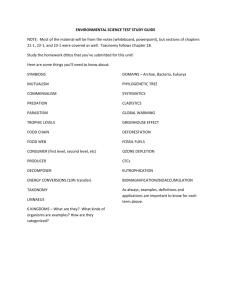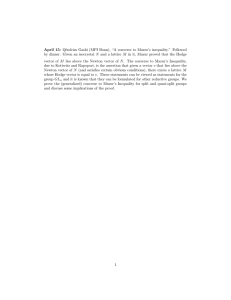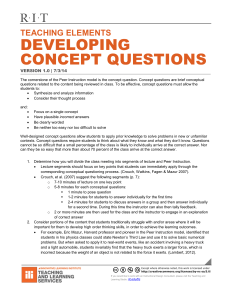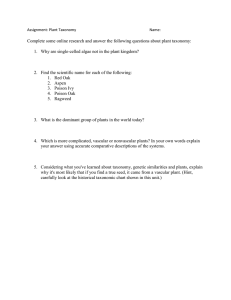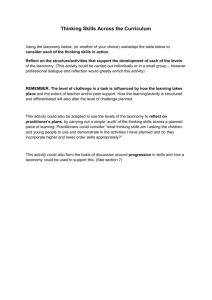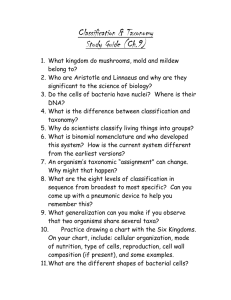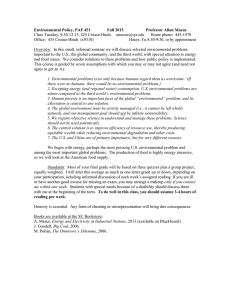Enhancing Student Success: Teaching Well With Technology October 23, 2009
advertisement
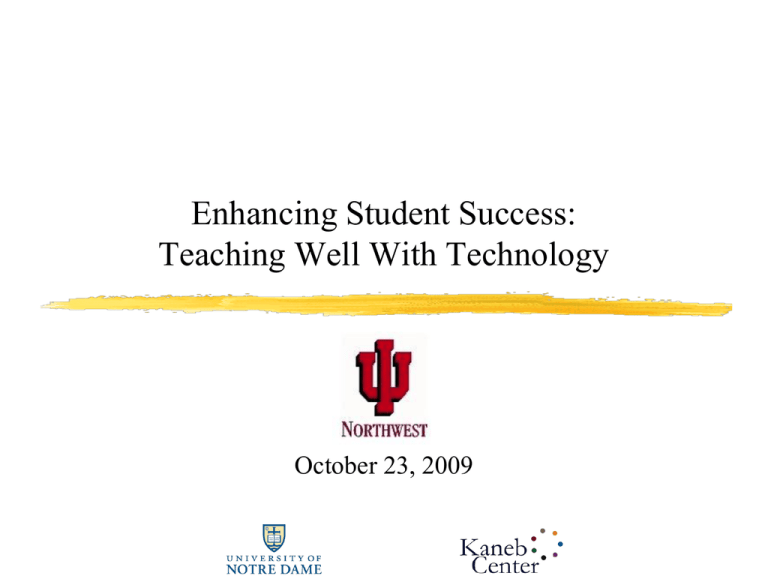
Enhancing Student Success: Teaching Well With Technology October 23, 2009 Poll Participation, respond by: Sending a text message to 99503 (in place of mobile #). Tweeting to @poll Browsing to http://poll4.com In the message, tweet or answer box enter the 5-number code corresponding to your choice. Whitmore Example October 23, 2009 The Silver Bullet? Clark (1983) and Mazur (2009) on Technology “…, if teachers merely add on technology to ineffective instructional methods (e.g., electrifying the lecture hall), there will be no improvement in student learning.” Clark, R.E. (1983). Reconsidering Research on Learning from Media, Review of Educational Research,Vol. 53, No. 4, Pp. 445-459. “I often meet people who tell me they have implemented this “clicker method” in their classes, viewing my approach as simply a technological innovation. However, it is not the technology but the pedagogy that matters (5).” Mazur, E. (2009). Farewell, Lecture?, Science, 323, 50-51. http://mazur-www.harvard.edu/email/reprintrequest.php?r=635 October 23, 2009 Teaching Well With Technology Articulate learning goals Identify pedagogical strategies/learning activities Consider best uses of time and space Consider technologies that will enhance learning Plan in and out of class activities Evaluate results October 23, 2009 Why Articulate Student Learning Goals? Learning Goals: Identify the most important outcomes for the course Keep the course focused Form the basis for designing assessments/assignments. Add transparency for the students Improves student performance Decrease time spent responding to student work Connect to the Broader (Program/Department/University) Goals? October 23, 2009 A Taxonomy for Learning, Teaching & Assessing: The Cognitive Process Dimension Create Evaluate Analyze Apply Understand Remember From A Taxonomy for Learning, Teaching & Assessing: A Revision of Bloom’s Taxonomy of Education Objectives. Anderson & Krathwohl (Eds.) October 23, 2009 Taxonomy of Significant Learning Learning How to Learn Foundational Knowledge • Becoming a better student • Inquiring about a subject • Self-directing learners Understanding and Remembering: • Information • Ideas Caring Application Develooping new: • Feelings • Interests • Values Human Dimension Learning about: • Oneself • Others • Skills • Thinking: Critical, creative and practical • Managing projects Integration Connecting: • Ideas • People • Realms of Life October 23, 2009 From Creating Significant Learning Experiences: An Integrated Approach to Designing College Courses. L. Dee Fink Pedagogical Strategies: Seven Principles for Good Practice in Undergraduate Education (Chickering and Gamson) encourages contact between students and faculty, 2. develops reciprocity and cooperation among students, 3. encourages active learning, 4. gives prompt feedback, 5. emphasizes time on task, 6. communicates high expectations, and 7. respects diverse talents and ways of learning. 1. Orbital example October 23, 2009 Current Support for Student Centered/Active Learning “Data obtained in my class and in classes of colleagues worldwide, in a wide range of academic settings and a wide range of disciplines, show that learning gains nearly triple with an approach that focuses on the student and on interactive learning (7, 8).” Mazur, E. (2009). Farewell, Lecture?, Science, 323, 50-51. October 23, 2009 Best Use of Time and Space Student Accountability is the Key! The responsibility for gathering information now rests squarely on the shoulders of the students. They must read material before coming to class, so that class time can be devoted to discussions, peer interactions, and time to assimilate and think (4). Instead of teaching by telling, I am teaching by questioning. Mazur, E. (2009). Farewell, Lecture?, Science, 323, 50-51. October 23, 2009 Consider Technologies That Will Enhance Learning Who will use the technology? What strategies will the technology support/enhance? Is it feasible? Infrastructure/support for you Accessibility/support for students Botting Example – student films October 23, 2009 Examples of the impact of our work Barry Keating – Finance Todd Whitmore – Theology – Rich, Poor, War Market Simulation Anonymous polling to generate open discussion Eileen Botting – Political Science – Mary Wollstonecraft and Mary Shelley Alternative forms of expression and assessment October 23, 2009
